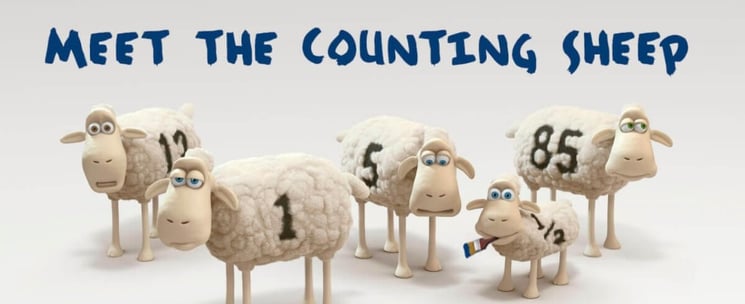Are your content marketing campaigns fully using the power of storytelling? If they’re not, you’re missing one of the major building blocks of a successful content marketing strategy. Content Marketing Institute even makes it the third step in their framework that includes seven building blocks.
Storytelling is so important to content development that we decided to do a series on how to apply storytelling to your content marketing campaigns. Today’s post will focus on developing compelling characters.
Choosing the Right Character for Your Content Marketing Campaigns
The character or characters in a blog post, company video or ebook can be almost anyone – fictional or real. The best content development, whether it’s traditional advertising or inbound marketing, has strong, memorable characters that draw in an audience. Take, for example, the Serta Counting Sheep. They’ve got big personalities and are wildly popular thanks to Serta’s humorous take on an old, well-known mental device for falling asleep fast.

These characters aren’t random. They’re directly tied to the product that Serta is selling. Likewise, your character should be a conscious choice you make that takes into account how you want to tell your story. Is your character serious, like a trusted authority, or is your character a wise-cracking animation? Whoever the character is, they should embody your brand story and take into consideration your product and your audience.
Even when the character is simply a satisfied customer giving a testimonial, they’re representing your brand and should be in sync with who your audience is. If your primary customers are millennials, you might think twice about Tom Selleck selling your product. But, he’s the perfect spokesman for selling reverse mortgages to seniors. It pays to keep your buyer personas in mind at all times.
Choosing the Right Point-of-View for Your Content Marketing Campaigns
As soon as you know who the story is about, your next decision is to choose the point-of-view (POV). Sometimes the point-of-view doesn’t even seem like a choice at all – the character dictates what the point-of-view is. But, it’s good to know the options. There may be times when you want to make a deliberate choice. Let’s take a look at each of the three main viewpoints you can use in your content development efforts with an example of how it sounds in writing, some examples of the types of characters that work well and some of the reasons you might choose that point-of-view.
First-Person POV – Me, Myself and I
Example: “I walked up to the counter and gave the man my lucky quarter.”
Characters: A company’s founder telling the company’s origin story; an employee giving a heart-felt reason for why they work for your company; a customer giving a testimonial about the fantastic experience she had dealing with your brand.
Reasons: You want to create a sense of authority, make a personal connection or capitalize on 3rd-party validation.
Second-Person POV – You and Yours
Example: “If you want them to remember your brand, you have to make your content memorable.”
Characters: By nature, the character in a story told in the second-person point-of-view will always be the reader. The character is your audience.
Reasons: In novels and short stories, the second-person point-of-view is used only rarely – and very deliberately when it is – because it limits the amount of narrative you can use. But for content development, it’s ideal. Second-person point-of-view is probably the most commonly used point-of-view in blog posts and other digital content, such as podcasts. One of the goals of content marketing is reaching an audience to discuss their pain points and various solutions in the most direct way possible. The fastest way to help your audience see themselves in the story is making them the character.
Third-Person POV – He said, she said
Example: “The CMO wasn’t convinced. That’s when John Hopper, the company’s expert on customer engagement analytics, chimed in with the three key pieces of information he needed to make his decision.”
Characters: Anyone and anything. A client, a founder, an employee, an industry influencer, a notable author, a fictional character, a talking dog, a personified chair…
Reasons: The third-person point-of-view gives you the power to provide a lot of details. It’s like telling a story through a wide-angle lens. It’s a great fit for case studies, and in many ways a third-person POV can be ideal for a vignette in a blog post to drive home a point or for a narrated video.
Using Great Content to Bring Your Character to Life
Once you know who your character is and from which point-of-view the story will be told, it’s time to bring the character to life – to give your readers a mental image of the character – and there are a number of tools that you can use to accomplish this, including description and dialogue. This is where the art of storytelling comes into play – when the words and images you choose either work to create a relatable, compelling character or fail, leaving you with a character that’s flat and forgettable.
Character is revealed when describing actions, thoughts and feelings, through the use of dialogue and with visual storytelling. In the next part of this series, we’ll cover conflict in storytelling. It’s through a story’s conflict that we really understand who a character is. It’s also how, as the audience, we come to understand something about ourselves. That's why conflict lets digital marketers drive home the need for a product. After all, if the Serta Counting Sheep are so afraid of losing their jobs to a mattress, then the mattress must be that good.






